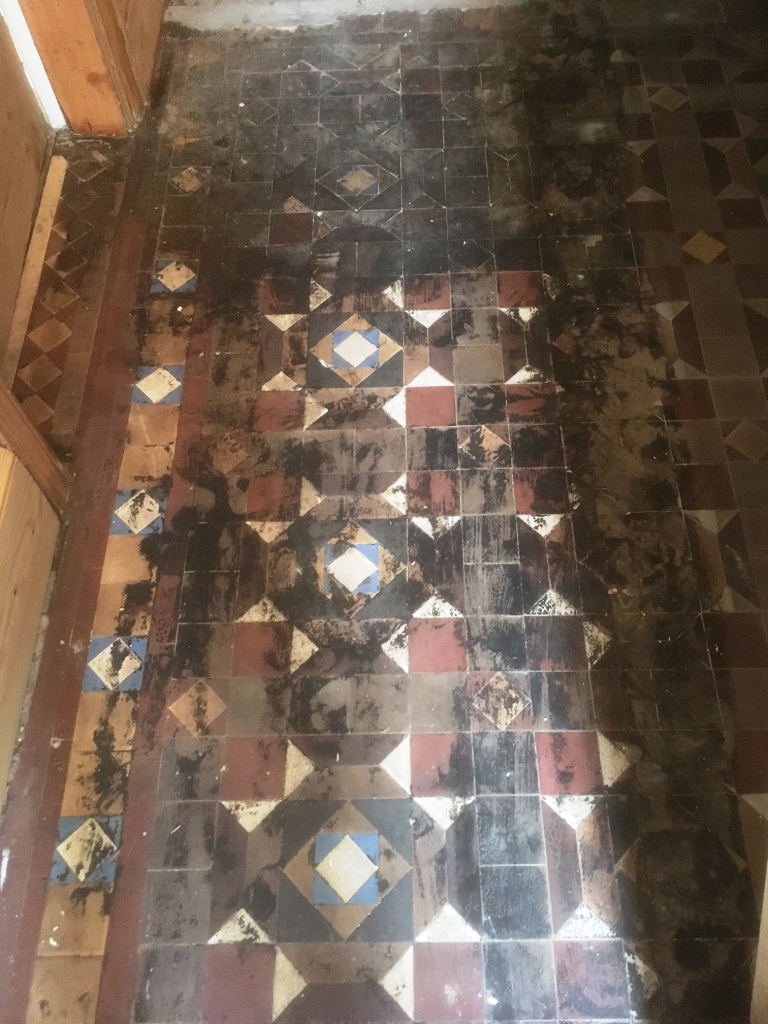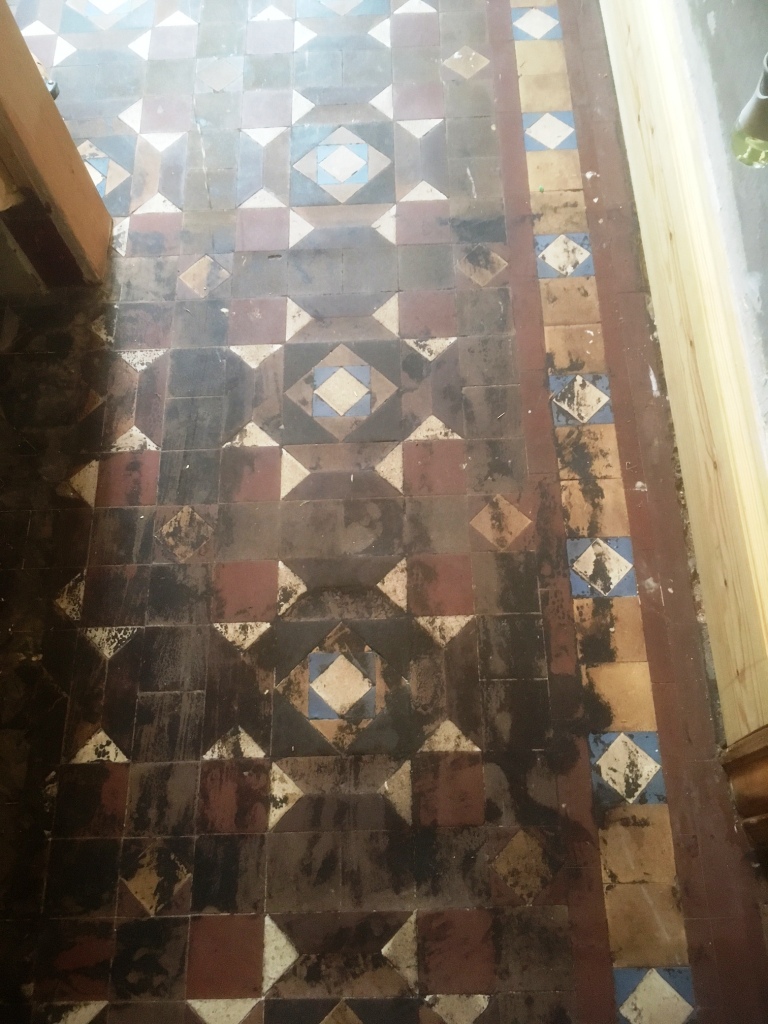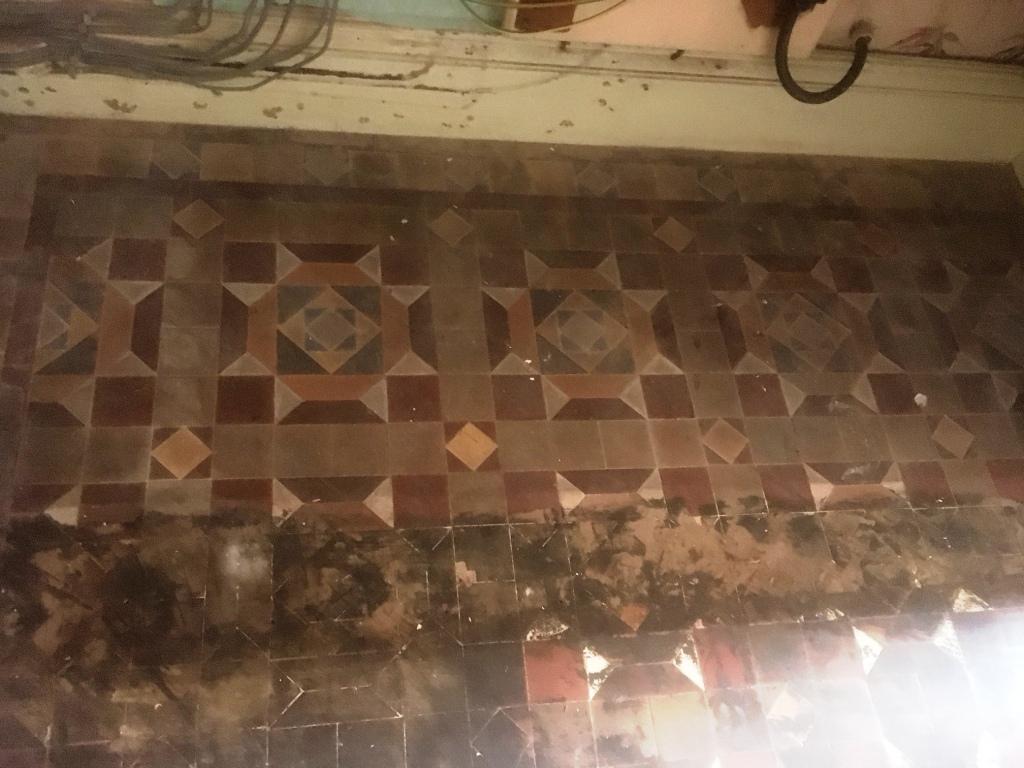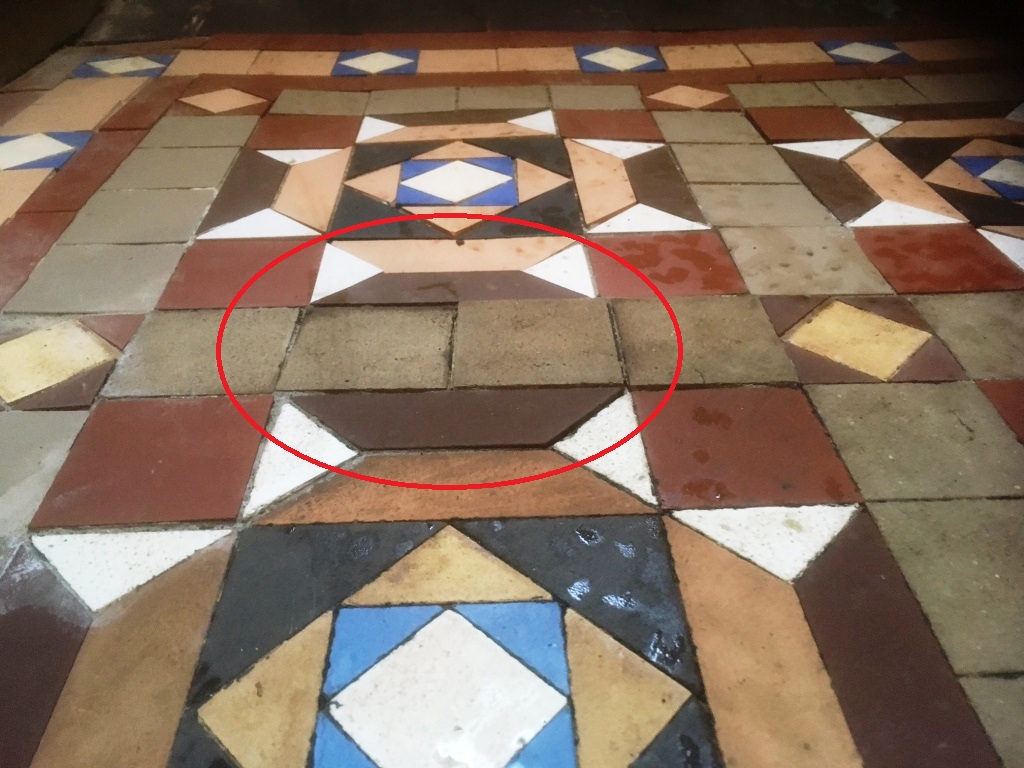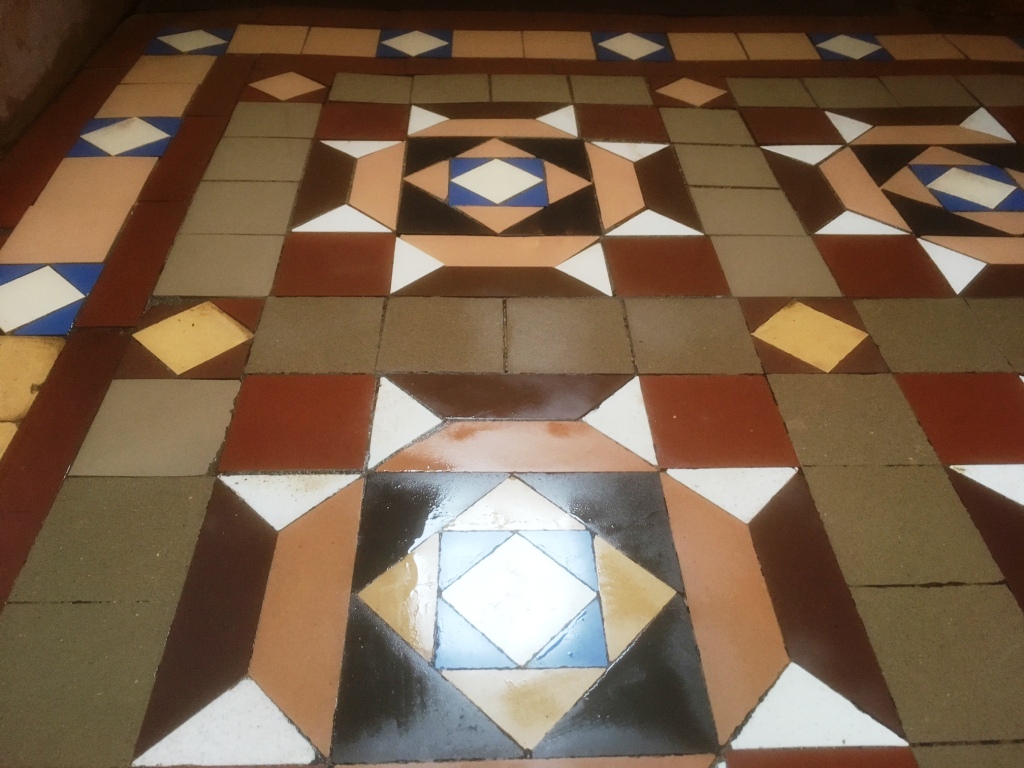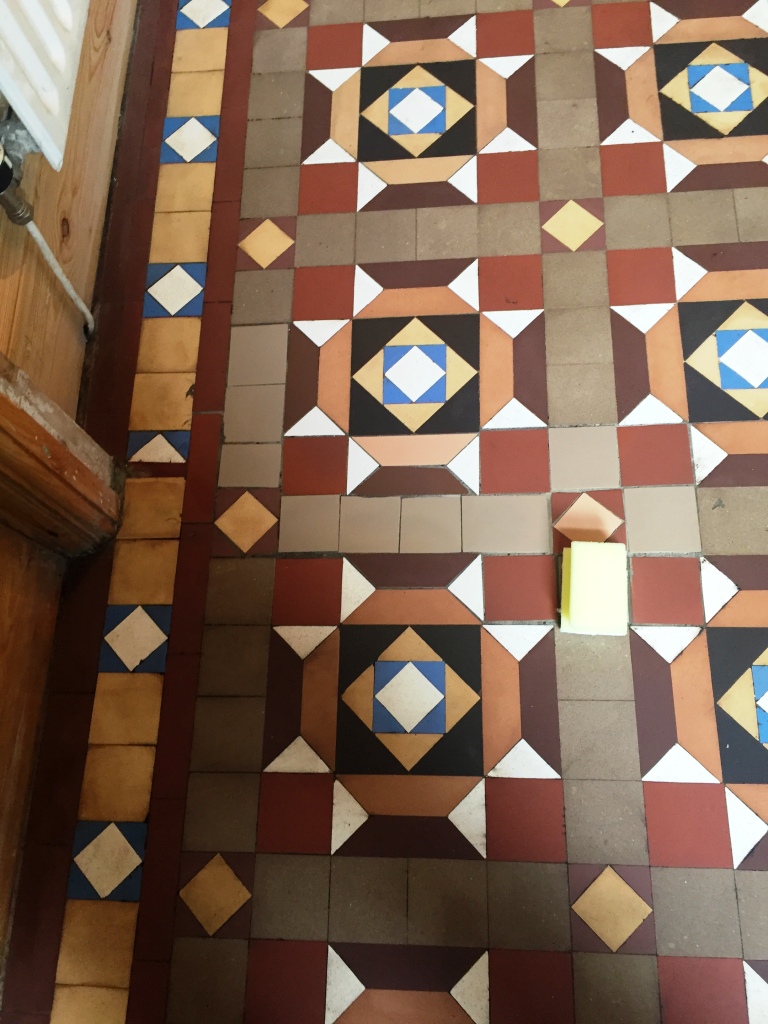The 18th century mill is now a popular attraction and I was recently asked to clean and seal the Sandstone flooring in the Kitchen of the head gardeners cottage. The cottage is actually located in the formal gardens which were recently visited by HRH Price of Wales.

The Sandstone Kitchen floor was in good physical condition so unlikely to be the original however like any stone floor in constant use the sealer was wearing off and dirt was becoming ingrained in the pores of the stone detracting from its overall appearance.

Cleaning Dirty and Dull Sandstone Flagstones
Our first job was to protect the wooden kitchen units and other woodwork with tape. Next I set about cleaning the Sandstone and stripping any reaming sealer off in the process. To do this I applied a strong dilution of Tile Doctor Remove and Go, which is multi-purpose stripper and cleaner. The product strips away any old sealer on the tiles and draws out ingrained dirt, stains and heavy grease build-up.I applied the product and left it to soak for roughly fifteen to twenty minutes to allow time to break down the old sealer and penetrate the pores of the stone to reach any embedded dirt. Next, I scrubbed the floor using a specialised buffing machine fitted with a black scrubbing pad swelled with water to get the stone clean. The resulting dirty cleaning slurry was quickly soaked up using a wet vacuum and after rinsing with water With the floor clear I was able to spot stubborn areas that need more work and repeated the process.
With the stone clean I turned my attention to the grout lines and scrubbed in a strong dilution of Tile Doctor Pro-Clean which was then rinsed off with water. I then completed another spot check of the floor whilst using the wet vacuum to get the floor as dry as possible. With the cleaning part of the job complete I left for the day to allowing the floor to dry off fully overnight.

Sealing Sandstone Kitchen Tiles
Upon returning to the property the following day, I tested the floor with a damp meter, checking for any excess moisture that could prevent me from sealing the stone. The floor proved dry and so I began to seal the Sandstone starting with a single coats of Tile Doctor Colour Grow. Colour Grow is an impregnating sealer that is designed to fill the pores of the stone blocking dirt from becoming ingrained there whilst enhancing the natural colours in the stone at the same time.Once the Colour Grow was dry I followed with the application of five coats of Tile Doctor Seal and Go which is a compatible water-based acrylic sealer which provides both a stain resistant surface seal and a durable low-sheen finish.

The floor now looks much healthier and the new sealer show keep it looking that way for some years to come.
Source: Sandstone Tile Cleaning and Sealing Service in East Cheshire
